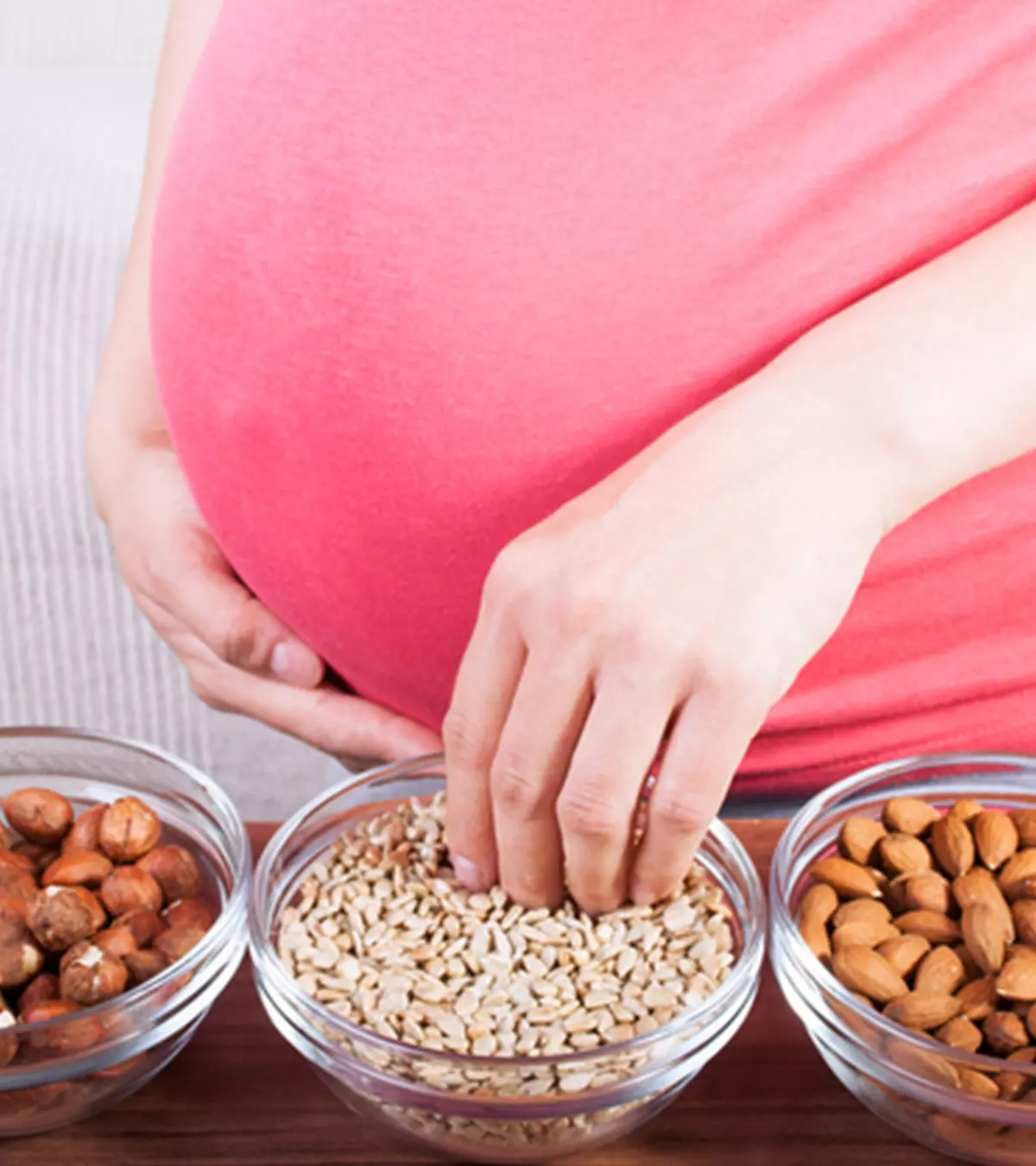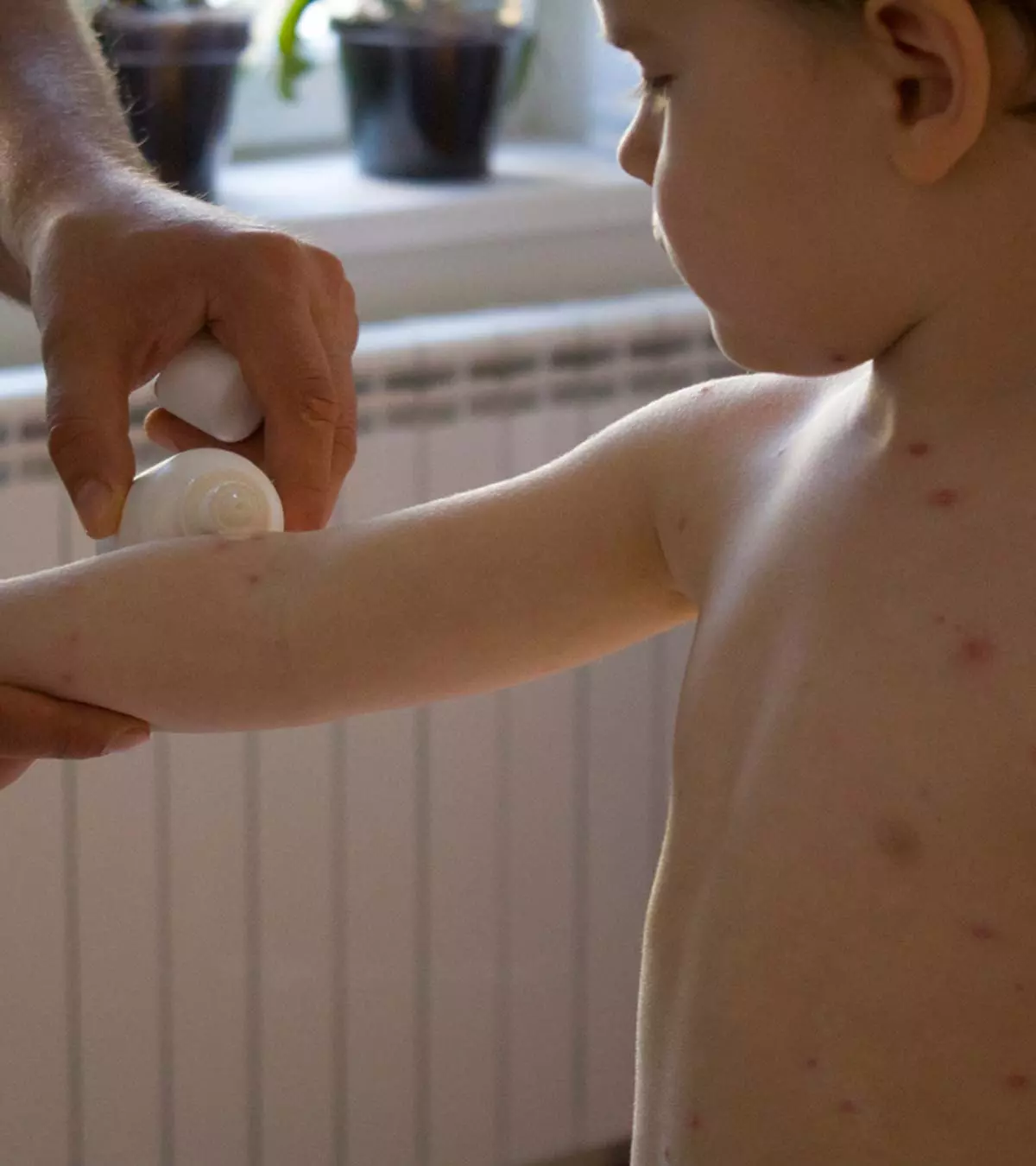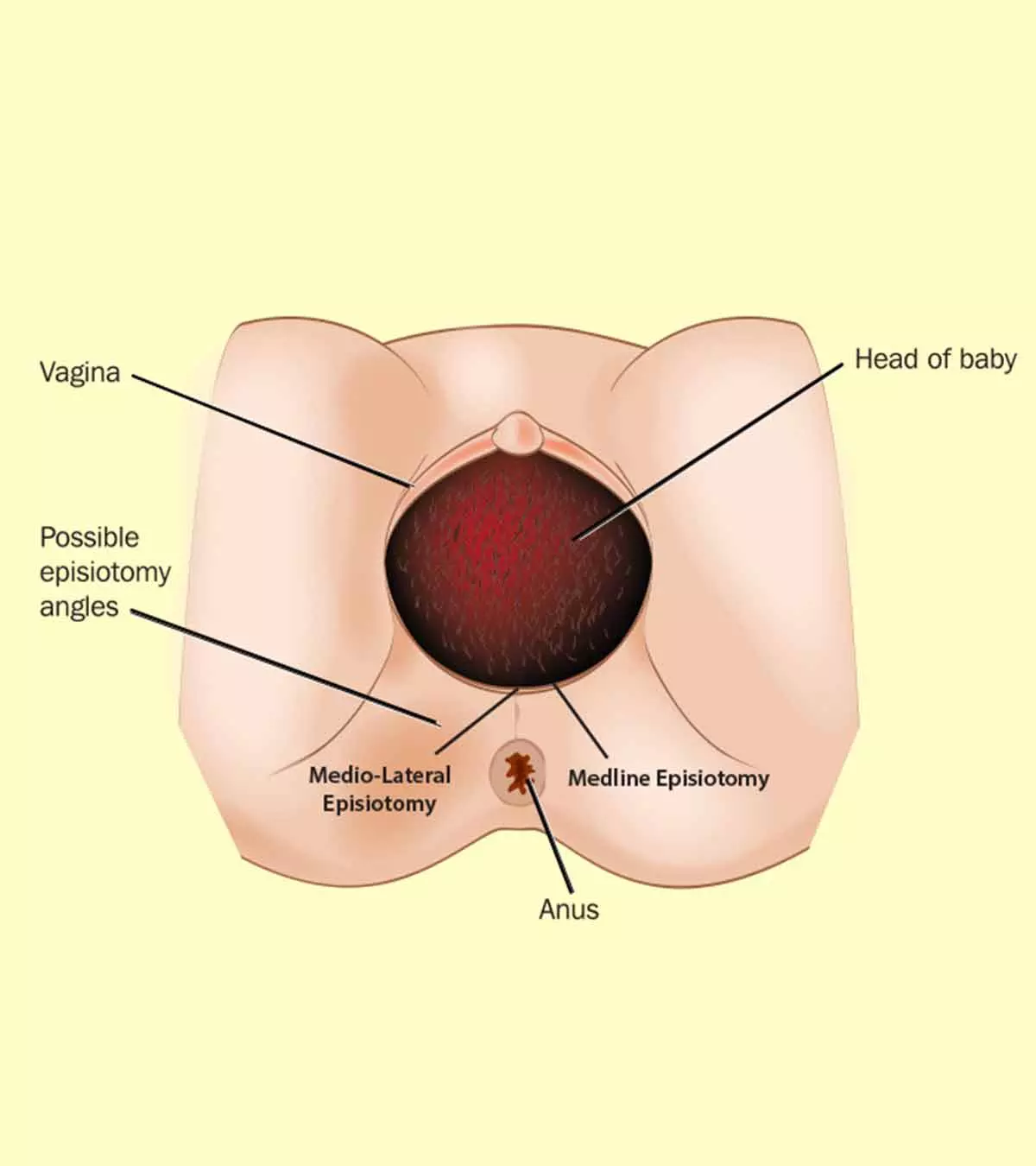

Image: iStock
Teenage is the stage in which a girl encounters menarche. In most populations, the median age for teenage menstruation is 12 to 13 years. However, lately, the age for menarche has shifted to nine years. This trend is mostly seen among girls who are obese, physically inactive, or have a genetic history of early menarche in the family.

Initially, the menstrual period in most girls varies from 21 to 45 days, shifting to 21-35 days later. The average duration of a period is four to seven days. However, it could vary in some depending on various factors.
Browse through this post to understand different aspects of teenage menstruation and ways to deal with them.
When Do Most Girls Get Their Period?
Menarche or the first menstruation usually happens around the age of 12 years for most girls. However, there is no fixed age for menarche. It is considered normal for a girl to have menarche between the ages of nine and 15 years (1). Hormonal changes can vary in each girl, so the age of menarche can be different (2). 98% of girls have menarche by the age of 15.
The following signs may indicate that the girl may begin her menstruation soon.
- Menarche may occur about two years after the beginning of the breast development
- Vaginal discharge may begin six months or a year before the first period
If the first period is delayed beyond 15 years of age or alternatively it occurs before nine years of age, known as precocious puberty, it requires medical attention.
What Causes A Period?
Hormonal changes in a girl’s body are responsible for menstruation or period. Periods begin only once the HPO (hypo thalamic pituitary axis) maturation occurs. These glands release certain hormones that act on the ovaries. Ovaries in females release the hormones progesterone and estrogen. These hormones thicken the uterus’ inner lining (endometrium) in preparation for the attachment of a fertilized egg (ovum). If the fertilization does not occur during the ovulation period, these hormone levels gradually decrease.
The decreased levels of estrogen and progesterone cause shedding of the endometrial lining, and menstruation begins. Blood and tissues lining the endometrium are expelled through the vagina as menses. The usual length of menstruation can be four to seven days. Each month the same mechanism repeats through the reproductive years of a woman’s life (3).
How Does Ovulation Relate To Periods?
Ovulation is the release of the egg (ovum) from the ovaries, while menstruation is the shedding of the endometrial lining along with blood. The hormones that cause thickness of the uterine lining in preparation for the fertilized egg are also responsible for ovulation (4).
After ovulation, the ovum travels through the fallopian tube to reach the uterus. If the fertilization happens, the fertilized ovum moves down to the uterus and attaches to its thick wall. Hormones prevent the shedding of the uterus lining, and the baby can grow in the womb.
If the ovum is not fertilized, the decreased levels of hormones cause the uterus’ lining to shed, leading to menstruation. Thus, ovulation and menstruation or periods are related events.
What Are The Signs That A Girl Is About To Start A Period?
Breast development begins two to three years prior to the first period.
Some girls may experience emotional and physical changes before menstruation. This condition is known as premenstrual syndrome (PMS) and causes the following signs and symptoms (5).
- Sadness
- Anxiety
- Mood swings
- Bloating
- Acne
- Nausea
- Back pain
- Food cravings
- Fatigue
Some may even have these signs and symptoms during menstruation. Usually, these symptoms resolve within the first few days of the period. Some girls may not have any signs and symptoms before or during menstruation.
The best way to combat PMS is to have a healthy lifestyle, eat a balanced diet, stay physically active and get eight hours of uninterrupted night time sleep.
Do Periods Happen Regularly At The Start Of Menstruation?
It is normal to have irregular menstruation during the first few years after menarche, although not all girls may experience it. Hormonal changes could affect changes in the menstrual cycle. About 60-80% of girls will have 21-35 days long cycle similar to adult women within three years after menarche (1).
Usually, the menstrual cycle should be regular and repeated every four to five weeks. If the menstruation occurs with irregular patterns, you may consult a gynecologist to exclude any cause of concern. Early identification may help to manage hormonal imbalance with diet and lifestyle modifications in most girls.
Which Menstrual Product Is Best To Absorb Blood?
There are various choices to deal with menstruation. Pads, tampons, or menstrual cups are used to absorb or collect the blood and vaginal secretions during periods. Some girls may choose one menstrual product, whereas some may try various methods.
Trying various products could help a girl identify the most convenient option. It is essential to know the right method of use. The following are some salient points related to various menstrual products and their use.
- Pads are often the preferred choice during the initial years of menstruation. Cotton pads of different sizes are available in the market. The girl may choose one after multiple trials. Highly absorbent pads are the most preferred type. Changing pads every four to six hours is essential to avoid skin irritation and maintain personal hygiene.
- Tampons are cotton plugs that can be placed into the vagina. Most tampons come with an applicator to help in insertion. Some girls may find tampons more efficient than pads. It may also make a girl feel comfortable while performing physical activities, such as swimming. . You should not leave the tampon for more than six to eight hours since this may increase the risk of infection and toxic shock syndrome.
- Menstrual cups are inserted into the vagina, and it holds blood until emptied. These silicone cups need to be sterilized and reused up to their expiry date. You may choose a cup size based on the girl’s preference and the flow of menses. A menstrual cup needs to be emptied and cleaned regularly.
Choosing the right menstrual product and learning its correct use can make periods easier to manage for girls.
When To Worry About Menstrual Problems?
Most girls usually have normal periods. The following situations may require you to consult a gynecologist.
- No menstruation after 15 years of age
- Onset of periods before eight years of age
- Irregular periods for more than two years after menarche
- Bleeding between periods
- Severe cramps even after taking OTC medications
- Heavy bleeding
- Period lasting more than a week
- Severe PMS interfering with daily activities
- Altered color of menstrual blood such as pink, brown or blackish
Although most girls will have normal menstruation in later years, it is ideal to consult a gynecologist to begin early interventions for any underlying problems.
Is It Possible To Be Pregnant As Soon As The Period Starts?
A girl can get pregnant as soon as the period begins. Even right before the menarche (first period), it is possible to become pregnant since each month before periods, including the first period, the hormones cause ovulation.
The uterine wall is also ready for the attachment of fertilized eggs and to develop the fetus. Therefore, the ovum (egg) could be fertilized if the girl has unprotected sex. Early sex education may help to prevent preteen and teen pregnancies in many cases.
Frequently Asked Questions
1. What is the youngest age a girl gets her period?
Since puberty in girls begins within the age group of 8 to 13, they may get their period as early as eight. However, sometimes girls may start menstruating even before eight years in case of precocious puberty (7) (8).
2. How do I know the difference between spotting and my period?
Spotting mainly occurs after you conceive following the implantation of the fertilized egg. The difference between spotting and period are (9):
- Spotting blood is either light pink or dark brown, unlike the period blood that is dark red.
- Spotting does not pass blood clots, unlike periods.
- Spotting usually lasts a few hours to three days, while periods persist for four to seven days.
Teenage menstruation can be irregular in the first few years, but it gradually becomes regular in many girls. Emotional and physical changes such as breast development and premenstrual symptoms are observed before the menstrual cycle begins in teens. The first menstrual cycle generally occurs at around 12 to 15 years in most girls, but this age may slightly vary depending on hormonal changes. It is recommended to visit a gynecologist if your daughter has periods before eight years of age, does not have periods beyond 15 years of age, has severe cramps, and bleeding between periods.
Key Pointers
- Girls usually get their first period by the time they are 12 years of age.
- Bloating, mood swings, nausea, and fatigue are common signs before periods begin.
- Pads, tampons, and menstrual cups are primarily used to absorb the blood during menstruation.
- Heavy bleeding, severe cramps, PMS, and other signs indicate that you should consult a gynecologist.
References
1. Menstruation in Girls and Adolescents: Using the Menstrual Cycle as a Vital Sign; The American College of Obstetricians and Gynecologists
2. Your First Period; The American College of Obstetricians and Gynecologists
3. Menstruation; MedlinePlus; US National Library of Medicine
4. Periods and fertility in the menstrual cycle; National Health Service
5. Premenstrual Syndrome (PMS); Harvard Medical School
6. Very Heavy Menstrual Flow; The Center for Menstrual Cycle and Ovulation Research
7. When is puberty too early? Duke Health
8. Precocious Puberty; Stanford Children’s Health
9. What is implantation bleeding? American Pregnancy Association
Community Experiences
Join the conversation and become a part of our nurturing community! Share your stories, experiences, and insights to connect with fellow parents.
Read full bio of Dr. Akanksha Allahbadia Gupta
Read full bio of Dr Bisny T. Joseph















